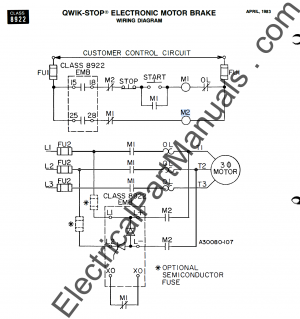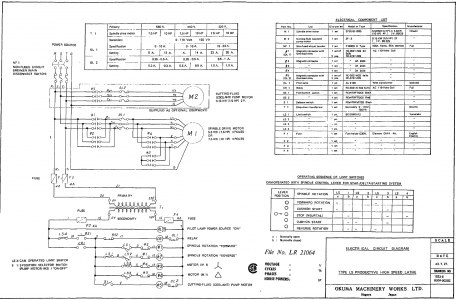I'm trying to install a Square-D 8922 EMB 20/480 DC injection brake on an old Okuma LS lathe with a 3 phase (240V) motor. The module didn't come with instructions but I found some online but they aren't very comprehensive and leave me with a lot of questions. The diagram from the DC Injection Brake manual is below as well as the wiring diagram for the Okuma lathe. I'm fairly confident the main power wiring is correct (L1,L2,T1,T2). I connected I5,I8 in series with the Start/Stop circuit however I'm not sure where 25,28 and X0,X0 (on the DC Injection Brake) are supposed to go. I originally thought X0 was a capacitor however it shows the same M1 symbol as show in series with 25,28 so I'm not sure what M1 is meant to be. (X posted on Practical Machinist)
-
Welcome back Guest! Did you know you can mentor other members here at H-M? If not, please check out our Relaunch of Hobby Machinist Mentoring Program!
How to wire a DC Injection Brake on a 3-Phase motor
- Thread starter bbarenz
- Start date



